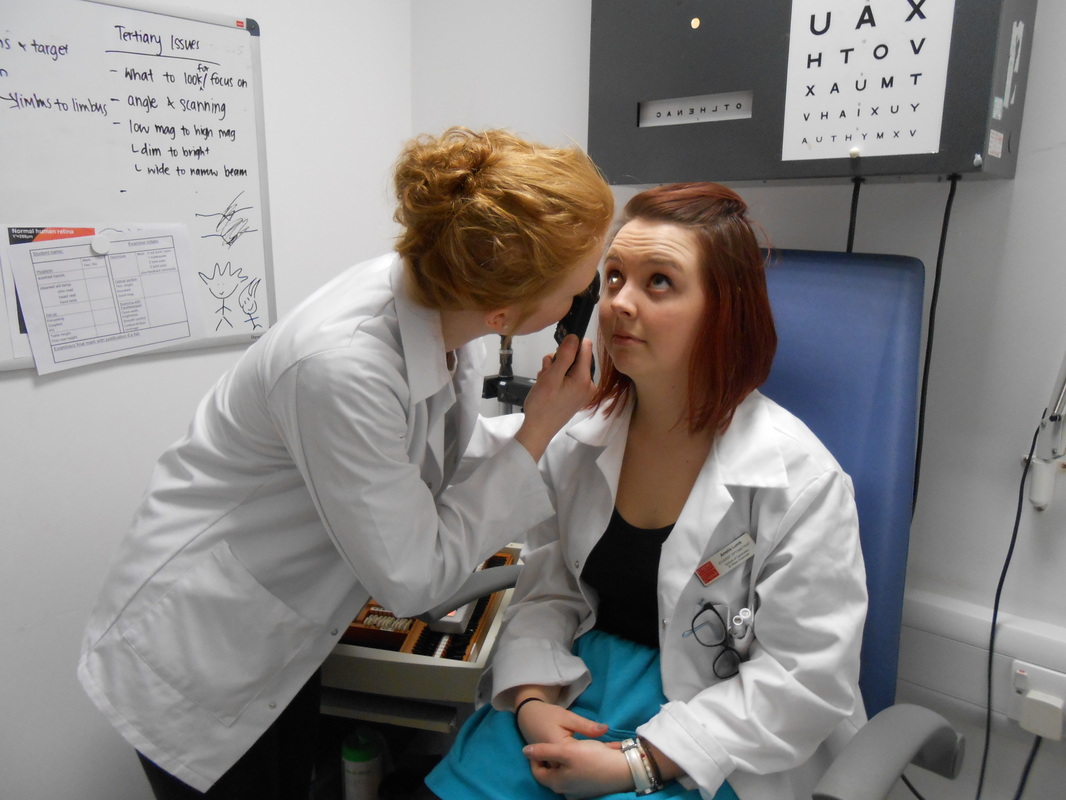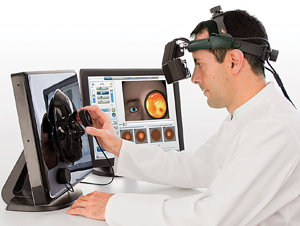Medical school isn’t easy. First, the academic difficulty of med school is compounded by the constant pressure of knowing that the lives of patients will someday depend on one’s ability to make the right call during treatment. Secondly, it is quickly apparent to even the beginning med student that one of the more difficult things about medical school is developing a comprehensive understanding of an extremely complex system with thousands of related, interworking parts – the human body. There is just so much information for students to retain, many books to read, and countless things to understand and memorize. While “practice makes perfect,” as teachers have been advising students for years, there is always a need for enhancing learning systems to help med students understand information quickly and accurately with the aim of minimizing mistakes down the road.\

Learning how to perform various physical exams is often done in a large group with–and sometimes even on–your classmates.
Ophthalmoscopy is a particularly difficult exam to visualize and practice. In layman’s terms, it is a test that allows the physician to look at the fundus of the eye, which is the back portion containing the retina, the optic disc, and blood vessels. It is hard to perform this exam, and even harder to master, especially because abnormalities in this area are very subtle and even a small amount of inflammation or exudates can be indicative of a serious problem. Because students need hands-on experience to learn, it can make for a long day in a dark classroom while each student practices examining an eye with the ophthalmoscope.

it’s not easy, believe us.
Some professors struggle to explain what students should be looking for, and even when it’s explained well, it can be difficult for students to translate the verbal description to a visual identifier. Students need to be understanding what they are seeing and what abnormalities can mean for patients to ensure that optical problems are identified and dealt with promptly. That’s why professors at the Center for Ophthalmology at the University Eye-Hospital in Tübingen, Germany designed a pilot study where 37 medical students were randomly assigned to be trained by either the conventional method or with the use of an augmented reality ophthalmoscope (ARO) in order to measure the differences these methods made in overall performance. The performance grade was quantified by asking students to perform a real traditional ophthalmoscopy, draw the optic disc of the patient, and complete a questionnaire. The pressure to learn was on!
So, what is ARO? How does it work? An Augmented Reality Ophthalmoscopy is an ophthalmoscopy simulator. Click here to check out the simulator developed by VRmagic, a German company that specializes in developing simulators for medical training.
For the test, a mannequin represents the patient, while the student used a binocular ophthalmoscope and lenses to display reflected images similar those the student would see in a traditional ophthalmoscope. This allows trainees to explore the eye freely and easily, getting a clear and realistic image of all views of the fundus, which allows the student to learn what they need to study during a real binocular indirect ophthalmoscopy. This sounds like it could take a lot of hassle out of the learning process!

An ophthalmoscopy simulator
The results were promising. The questionnaires showed no real difference between traditional hands-on training and ARO, meaning that students felt they were getting just as much experience out of the simulator as the traditional training. The training scores for the conventional ophthalmoscopy group were 1.2 on a scale of 0.67 to 2, with a statistical significant difference (P < 0.0033). Compare that to the ARO group who ranked a perfect score of 2! This certainly suggests that the ARO is a good teaching tool, perhaps even more helpful than the traditional training. While more tests need to be conducted, we are pretty excited about those results. What do you think about the ARO? Is AR positioning itself to be the premium training tool for med schools? We’re anxious to know what you think! What great ideas do you have for additional training tools that utilize AR? Let us know in the comments section below!
Source: https://www.ncbi.nlm.nih.gov/pubmed/24670999







